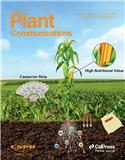
植物通讯(英文)(Plant Communications) 知网目次维普目次
- CSCD
- 主管单位:
中国科学院
- 主办单位:
中国科学院分子植物科学卓越创新中心、中国植物生理与植物分子生物学学会
- 国际刊号:
2590-3462
- 国内刊号:
31-2192/Q
- 学科分类:
- 字数:
6000-44000
- 有无基金:
/有基金 100.0%
- 周期:
CN外文-双月刊
- 特殊属性:
- 电话:
021-54922840;54922858(官网电话)
- 邮箱:
plantcom@sippe.ac.cn(官网邮箱)
- 复合因子:
0
- 综合因子:
0
- 收录:
知网目次,维普目次
- 级别:
CSCD
期刊简介
《植物通讯》期刊已被查看: 次
更新频次
单位占比
一作占比
/有基金-100.0%投稿指南
1、投稿方式:在线投稿。
2、刊内网址:(202304期)
https://www.cell.com/plant-communications/
3、投稿系统:
https://www.editorialmanager.com/plant-communications
4、期刊刊期:双月刊,逢单月出版。
2023年8月23日星期三
《植物通讯(英文)》(Plant Communications)期刊介绍
【微信公众号“Mol Plant植物科学”信息】
Mol Plant植物科学 2020-01-14
期刊介绍
定位
作为Molecular Plant的姊妹刊,Plant Communications通过与Cell Press合作出版,致力于成为具有广泛国际影响力的植物科学领域高水平开放获取式期刊.
目标
自2008年创刊以来,Molecular Plant经过12年的发展取得了可喜的成绩,发表了一系列重要研究成果,收到越来越多的优秀稿件。作为其姊妹刊,Plant Communications 将更具广谱性、发表植物科学所有相关领域的重要研究成果。
特点
Plant Communications将延续Molecular Plant 已经形成的所有特点,包括论文提交简单化,快速公正的审稿并给出建设性意见、快速在线发表、高质量的编辑排版以及开放获取的形式论文发布。
Molecular Plant和Plant Communications已使用相同的投审稿系统Editorial Manager,有助于期刊间稿件的直接transfer。Plant Communications 将主要发表具有深入分析和前瞻性观点的综述文章,较高水平的研究论文以及技术方法和资源性论文。
创刊号
除了创刊号社论(Editorial)外, 在创刊号中Plant Communications 共发表了14篇论文,包括9篇综述,4篇研究论文和1篇资源性论文,涵盖了植物科学领域的许多研究热点,阐释了植物科学的复杂性与多样性及对农业和全球生态系统的重要性。
Plant Communications创刊号阅读地址
www.cell.com/plant-communications/current
投审稿地址
www.editorialmanager.com/plant-communications
《植物通讯(英文)》作者须知
【官网信息】
Information for authors
As
a Cell Press partner journal and sister to Molecular Plant, Plant
Communications is launched as a full open access platform dedicated to
publishing important research advances on all aspects of plant sciences.
The journal uses the online submission system, Editorial Manager, to
process all the manuscript submissions. If you are not familiar with
this system, please read the guide for Editorial Manager. Complete
guidelines for preparing and submitting the manuscript to Plant
Communications are provided below.
Editorial evaluation timeline
Plant
Communications uses single-blind peer review. All submissions to Plant
Communications are initially evaluated by in-house professional
scientific editors. Submissions that are deemed not appropriate for
publication after initial evaluations will be returned to authors
without external reviews, typically within 7 working days. Manuscripts
selected for external reviews will be typically evaluated by two or
three reviewers for each manuscript. The editors will make every effort
to ensure timely reviews and communicate an editorial decision in about
4-5 weeks after the receipt of the manuscript.
If
publication is contingent on a revision, the handling editor will
evaluate the reviewers' comments and provide specific guidance on the
revision. In general, 1 month will be given to manuscripts that require
minor revisions and 3 months for those that require major revisions.
The
same reviewers who reviewed the previous version will typically
evaluate the revised manuscript. However, in some cases, the editor may
find it appropriate or necessary to recruit new reviewers. There is no
time limit for resubmission of previously rejected manuscripts, but any
conceptual advance and significance are evaluated based on the
literature available on the day of the final decision, not the day of
submission.
Typically,
accepted papers will be published online within 7 days and in print
within 3 months after acceptance. Any major changes after acceptance are
subject to review and may delay publication.
Manuscripts authored by a member of the Editorial Board
Manuscripts
authored by Editors or members of the Editorial Board are handled with
the same editorial process and high degree of confidentiality as
submissions from all other authors. All possible measures are undertaken
to avoid any potential conflict of interest in handling of such
manuscripts at all the stages, including allocation of handling Editor,
selection of reviewers, decision making, and, if required, processing
for publication.
Procedure for appeals
To
appeal an editorial decision you have received from Plant
Communications, please email the editorial office, summarizing the
scientific basis on which you wish you appeal and including the
manuscript number in the subject line of your email. The handing editor
and, as needed, editorial team will consider your appeal and respond to
you once they have done so. Please note that when your paper is under
appeal at Plant Communications, we regard it as being under active
consideration, so please let us know immediately if you decide to submit
to another journal instead.
Presubmission inquiries
Plant
Communications welcomes authors to send presubmission inquiries
regarding suitability of their manuscripts. Such inquiries should
include a significance statement of the research or review paper, plus a
title page containing author information, abstract and key figures
(with legends) of the manuscript. All presubmission inquiries should be
sent to plantcom@sippe.ac.cn.
Status inquiries
Once
submitted, the status of a manuscript will be indicated as “under
review” soon after the initial format check, until a decision is made on
this paper. All inquiries on review status of a submission should be
directed to plantcom@sippe.ac.cn.
Manuscript transfer
Plant
Communications is editorially independent from Molecular Plant and
other Cell Press journals. If a manuscript is rejected by Molecular
Plant or other Cell Press journals and authors are interested in Plant
Communications, we welcome authors to transfer their rejected manuscript
to Plant Communications for consideration. If authors receive a
decision that includes an invitation for manuscript transfer, the email
will contain links allowing authors to accept or decline the invitation.
The acceptance link will enable authors to automatically transfer the
rejected manuscript (with or without previous reviews) to Plant
Communications. If there is no such an invitation in the decision,
authors may contact the editor of the original journal for exploring
this possibility. In many cases, the Editors of Plant Communications may
be able to reach a decision based on the existing reviews without
further reviews in a few weeks. If additional experiments or major
revisions are required, the Editors may seek comments from additional
reviewers. The authors are also allowed or sometimes requested by the
Editors to edit the manuscript files before or after the manuscript is
transferred.
As
always, the authors are also welcome to manually submit their rejected
manuscript to Plant Communications without mentioning the first review
process. In this case, the manuscript will be evaluated as a regular new
submission. Please visit https://www.cell.com/articletransfer for the
details about manuscript transfer.
Editorial policies
All
manuscripts are considered by Plant Communications with the
understanding that no part of the work has been published previously,
and the work is not under consideration elsewhere. All in press or
submitted works that are pertinent to the manuscript under consideration
by Plant Communications (including those cited in the manuscript under
consideration) must accompany the submission. Related manuscripts that
have been submitted elsewhere during the period of revision must
accompany the revised manuscript. Failure to provide copies of related
manuscripts under consideration elsewhere may delay the review process
and result in rejection of the submission. Under no circumstances will
Plant Communications consider a manuscript that contains data that have
been submitted for publication elsewhere. All the submitted manuscripts
for publication are checked for plagiarism after submission and before
review.
Preprint servers
Plant
Communications is happy to consider papers previously posted on
preprint servers such as bioRxiv. This policy only applies to the
originally submitted version of the paper, and Plant Communications does
not support posting of revised manuscripts that contain editorial input
and peer reviews or posting of the final published version to preprint
servers. Also, our prepublication publicity policies with regard to
coverage in the broader media still apply to studies posted on preprint
servers.
Authorship
Corresponding author
The
corresponding author(s) is responsible for ensuring that all
appropriate contributors are listed as authors and that all listed
authors have agreed to the manuscript's content and its submission to
Plant Communications. When an authorship dispute occurs, it must be
resolved and approved in writing by all parties before the manuscript is
processed further. Multiple corresponding authors are allowed for a
single submission, but at least one corresponding author should be
responsible for ensuring adherence to all editorial and submission
policies and for timely communication and action.
Co-authorship designations
In
addition to the corresponding author(s), in recognition of increasingly
collaborative studies, up to two additional co-senior authors may be
designated. All co-senior authors will be identified by a numeric
footnote in the affiliation list (e.g., "5Co-senior author"). Beyond
co-senior and co-corresponding author designations (see above),
co-authorship designations are only permitted for the first author
position. There is no limitation on the number of authors that can be
designated as co-first authors, but a description of each author's
specific contribution must be provided in the author contributions
section of the manuscript. All co-first authors will be identified by a
numeric footnote in the affiliations list (e.g., "4Co-first author").
Addition or removal of author names after submission is not allowed
unless it is justified under exceptional circumstances where a
satisfactory explanation for the proposed change will have to be
provided. Plant Communications will also require a letter of consent
from any person whose name has been removed to verify that the removed
author agrees to such an action.
Contributions
As
the complexity and interdisciplinary nature of science evolve, so do
the networks of collaborations both within and between labs. Because the
author list in a manuscript can be insufficient for conveying this
increasingly complex information, we ask authors to include information
about the specific contributions of each author in a dedicated Author
Contributions section. For more information, please see "author
contributions" under "preparation of specific sections" below.
……
官网信息:
https://www.cell.com/plant-communications/authors
上一篇:电化学能源评论(英文)(Electrochemical Energy Reviews)下一篇:基因与疾病(英文)(Genes & Diseases)
《植物通讯》同类农学期刊
-
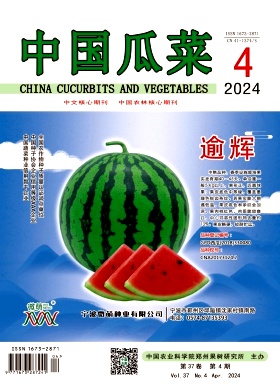
中国瓜菜
北核,武B+,CACJ-扩展
CN中文-月刊影响因子1.052
-
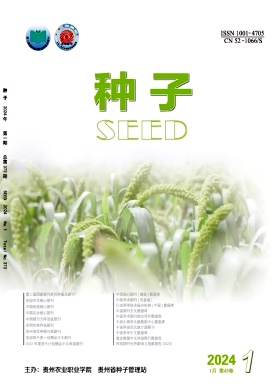
种子
北核,科核,武A
CN中文-月刊影响因子1.408
-
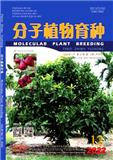
分子植物育种
北核,科核,武A
CN中文-半月刊影响因子1.424
-
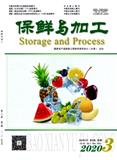
保鲜与加工
北核,科核,武A
CN中文-月刊影响因子1.881
-
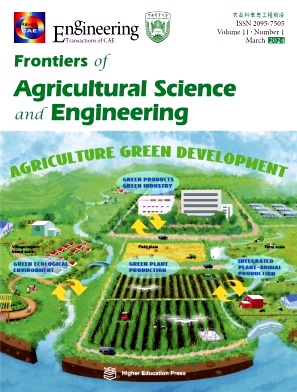
农业科学与工程前沿(英文版)(Frontiers of Agricultural Science and Engineering)
CSCD
CN外文-季刊影响因子0.793
-
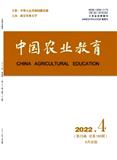
中国农业教育(不收版面费审稿费)
AMI扩,武B+,CACJ-扩展
CN中文-双月刊影响因子1.04
-
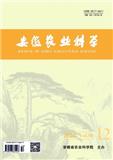
安徽农业科学
武A
CN中文-半月刊影响因子0.841
-

粮食储藏
武B+,CACJ-入库
CN中文-双月刊影响因子1.181
常见问题
-
植物通讯杂志社官网、联系方式是什么?
植物通讯杂志社官网:https://www.cell.com/plant-communications/
投稿网址:https://www.editorialmanager.com/plant-communications联系电话:021-54922840;54922858(官网电话)
投稿邮箱:plantcom@sippe.ac.cn(官网邮箱) -
植物通讯杂志是核心期刊么?
植物通讯是核心期刊,级别是:CSCD, 是:农学分类下的知网目次,维普目次收录的期刊。
-
请问你们是植物通讯杂志社吗?
我们不是《植物通讯》杂志社。本站主要从事期刊信息展示与期刊推荐,不是任何杂志官网,直投稿件请联系杂志社。本站仅提供免费的学术指导、论文辅导、期刊投稿信息整理收集服务。
-
你们指导服务后可以保证文章被发表吗?
期刊发表的成功与否,主要取决于文章内容的质量。编辑老师会根据研究领域、创新性等多因素进行考量。我们会帮助您理解期刊的发表要求,助力提升发表几率,从而增加发表的机会。
-
晋级论文能否在报纸上发表?
在学术界,论文的发表往往被视为研究者职业发展的重要一环。晋级论文,即为了获得更高职称或学术地位而撰写的学术论文,通常需在专业期刊上发表。然而,许多人可能会问
